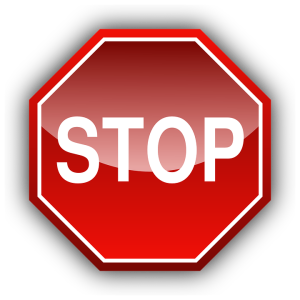
05 Dec What is the STOP BANG?
The STOP BANG questionnaire is a screening tool for Obstructive Sleep Apnoea (OSA). It was first developed in 2008 by Chung et al. as a screening tool for preoperative patients, the STOP  element of the questionnaire was tested among for this patient cohort.1,3 What they found was that the STOP questionnaire worked well for identifying severe OSA in this cohort, as well as being an easy test to administer and that it provided reliable results when tested again.1,3 However we know that surgical patients have a higher prevalence of OSA than the normal population, they then added the BANG section to the questionnaire to provide better sensitivity for patients with moderate OSA.3
element of the questionnaire was tested among for this patient cohort.1,3 What they found was that the STOP questionnaire worked well for identifying severe OSA in this cohort, as well as being an easy test to administer and that it provided reliable results when tested again.1,3 However we know that surgical patients have a higher prevalence of OSA than the normal population, they then added the BANG section to the questionnaire to provide better sensitivity for patients with moderate OSA.3
The STOP BANG questionnaire is an acronym for the elements of the test. This is a yes/no questionnaire with a score of 1 added for each positive or “yes” answer for that category. Scores of 0-8 are possible, with scores of 3 and above being suggestive of OSA, however the higher the score the higher the risk of OSA. The elements that make up the STOP BANG are common indications/risk factors for OSA and you are likely to routinely screen for these in clinical practice.
S – Snoring – Do you snore? Is it as loud as or louder than talking?
T – Tiredness – Do you wake up tired, or do you become tired during the day?
O – Observed Apnoeas – Have you felt or has anyone else told you that you stop breathing in your sleep?
P – Hypertension – Do you have high blood pressure, or are you on medication for high blood pressure?
B – BMI > 35kg/m2?
A – Age > 50 years?
N – Neck circumference > 40cm
G – Gender male?
Why is this important?
Most physicians are well aware of the disease burden of OSA in the Australian community and the associated co-morbidities and risks of undiagnosed and untreated obstructive sleep apnoea.2 Recently the medicare benefits schedule review taskforce released a report from the thoracic medicine clinical committee. Their first recommendation (relating to sleep studies) is to:
“Improve the triage of patients to testing, supporting direct GP referral through use of validated clinical assessment tools that identify uncomplicated patients with high pre-test probability of symptomatic moderate to severe OSA.”
There is estimated that 4.7% of the Australian population have OSA and that an annual health care cost of $408.5 million can be directly attributed to sleep apnoeas. 2 In addition to this there is an indirect cost of $2.6 billion attributed to OSA in Australia.2
Does the STOP BANG work?
The STOP BANG has been extensively tested over the past 7 years. The common theme coming from the research is that the test has high sensitivity, but less specificity (false negatives). Scores of 0-2 may be classified low risk for moderate to severe OSA, whereas a score of 7-8 is high risk for moderate to severe OSA.5 Most of the research agree that a score of 3 or above is suggestive of OSA, the statistics may vary slightly depending on the patient cohort tested, with the results generally showing that between 60-90% of patients with a STOP BANG score of 3 as having an AHI > 15. 3,5,6,7 AHI of 15 is often referred to as moderate OSA. The interesting thing about these scores is that the probability of OSA increases proportionally with increases in STOP BANG scores.7
Can it be better?
It seems that some of the elements within the STOP BANG may not be equal, for example BMI > 35 + a score of 2 from the STOP section of the STOP BANG will increase the sensitivity of the test.4 However as a screening tool just as it is, it has been proven quite effective. The clinical judgement of the medical practitioner examining the patient is of significant importance too, and this screening tool is not designed to replace this.
Other screening tools do exist, but these are either not as sensitive or easy to use as the STOP BANG, these include; the ASA checklist, Berlin questionnaire, Epworth sleepiness scale and Stamford sleepiness scale.
For more information on screening for sleep disorders, referral practices or patient care options please:
- visit our website (http://thoracicandsleep.com.au/doctors-information/)
- or free call: 1300272688 (1300 A SCOTT)
Resources:
- https://www.ncbi.nlm.nih.gov/pubmed/18431116
- http://www.sleephealthfoundation.org.au/pdfs/news/Reawakening%20Australia.pdf
- http://www.nursingcenter.com/journalarticle?Article_ID=3256055&Journal_ID=54033&Issue_ID=3256011
- https://www.ncbi.nlm.nih.gov/pmc/articles/PMC4153119/
- https://www.ncbi.nlm.nih.gov/pubmed/26378880
- https://www.ncbi.nlm.nih.gov/pmc/articles/PMC4008971/
- https://www.ncbi.nlm.nih.gov/pubmed/26658438


